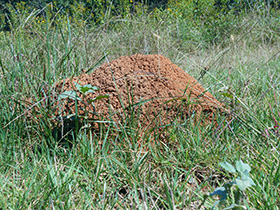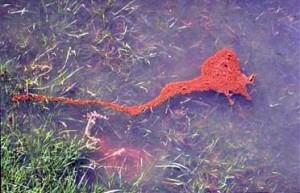Pest Problems After Storms – Fire Ants
go.ncsu.edu/readext?429142
en Español / em Português
El inglés es el idioma de control de esta página. En la medida en que haya algún conflicto entre la traducción al inglés y la traducción, el inglés prevalece.
Al hacer clic en el enlace de traducción se activa un servicio de traducción gratuito para convertir la página al español. Al igual que con cualquier traducción por Internet, la conversión no es sensible al contexto y puede que no traduzca el texto en su significado original. NC State Extension no garantiza la exactitud del texto traducido. Por favor, tenga en cuenta que algunas aplicaciones y/o servicios pueden no funcionar como se espera cuando se traducen.
Português
Inglês é o idioma de controle desta página. Na medida que haja algum conflito entre o texto original em Inglês e a tradução, o Inglês prevalece.
Ao clicar no link de tradução, um serviço gratuito de tradução será ativado para converter a página para o Português. Como em qualquer tradução pela internet, a conversão não é sensivel ao contexto e pode não ocorrer a tradução para o significado orginal. O serviço de Extensão da Carolina do Norte (NC State Extension) não garante a exatidão do texto traduzido. Por favor, observe que algumas funções ou serviços podem não funcionar como esperado após a tradução.
English
English is the controlling language of this page. To the extent there is any conflict between the English text and the translation, English controls.
Clicking on the translation link activates a free translation service to convert the page to Spanish. As with any Internet translation, the conversion is not context-sensitive and may not translate the text to its original meaning. NC State Extension does not guarantee the accuracy of the translated text. Please note that some applications and/or services may not function as expected when translated.
Collapse ▲
Fire ant mound in a field
Red imported fire ant us found in 75 of North Carolina’s 100 counties. The mounds vary in size and shape, usually in direct proportion to the size of the colony and on the type of soil (e.g., sandy soils versus clay). For example, a mound that is 2 feet in diameter and 18 inches high may contain about 100,000 workers, several hundred winged adults, and one queen. Mounds are usually located in exposed areas (rarely in shaded or wooded areas) as shown here. You may accidentally step on a nest or grab fire ants during cleanup activities in the yard.

Fire ant “raft” floating on the water surface. (Photo – B. Drees, Texas A&M)
In areas of severe flooding, fire ants will abandon their nests and form “rafts” which drift in the water until they find ‘high ground’, such as a tree trunk/limb or some other object. In these situations, the ants can pose problems during rescue and recovery efforts and other activities in flooded areas because “high ground” can also be the sides of a boat or the foundation of house..
When disturbed, fire ants will both bite and deliver painful stings. Within 24 hours after a person is stung, a pustule-like sore usually forms at the site of each sting and then usually begins to itch intensively. Scratching the pustule may rupture the skin, potentially leading to secondary infection (particularly if you are working in contaminated waters) as well as scarring. Just as with bee and wasp stings, some people people are highly allergic to fire ant stings and require medical attention after a stinging incident.
Fire ants are particularly fond of greasy-oily foods. While they typically an outdoor problem, disturbances during/after severe weather may bring them indoors in search of food or “high ground” which makes encounters with them more likely.
Here are some suggestions to follow if fire ants are common in your area:
- Watch where you step when clearing debris in yards,
- Insect repellents are not likely to be effective against fire ants.
- When eating outside, keep all food and drinks covered while they are not being consumed. Dispose of food scraps (and disposable dishes, dinnerware, etc.) in garbage bags and trash cans. Keep trashcans covered and (preferably) away from the house (to avoid drawing more foraging ants to where you are working)..
- Indoors – do not leave food exposed on tables, counter tops, or floors (in the case of pet foods).
- If your need to treat a fire ant mound that is disrupting cleanup and other activities, drench the mound with a liquid insecticide. Products containing Sevin, cyfluthrin or bifenthrin, lamda-cyhalothrin, and permethrin should work. Be careful when applying pesticides near standing water, ponds and pools. Many of these products have restrictions on how close they can be applied to a body of water. Fire ant baits work well, but they also take significantly longer time to effectively reduce the ant population and may not be as effective when there are other food sources (e.g, trash cans with old food) readily available.. Also, if you have fire ant bait that was damaged by rain or flooding, it’s likely contaminated and won’t be attractive to the ants. A list of products that can be used against fire ants is available in the North Carolina Agricultural Chemicals Manual.
For additional information, consult Control of the Red Imported Fire Ant


